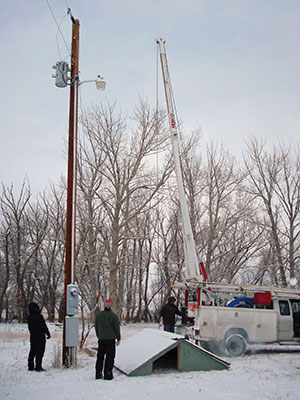EPA: hydrofracking may have tainted Wyoming aquifer


An Environmental Protection Agency (EPA) investigation has confirmed what many residents in the rural town of Pavillion Wyoming already believed – chemicals that are used to mine natural gas have contaminated their groundwater.
Pavillion is a town of approximately 165 people located 26 miles away from the city of Riverton. It is also home to natural gas mining operator Encana, which employs a controversial practice known as hydrofracking. Encana is one of the largest energy companies in the United States.
Hydro-fracking is a technique to extract natural gas from shale. A borehole is dug deep into the ground to inject a proprietary chemical mix that breaks up and opens channels in rock formations; gas is then expelled from the rock and collected.
Fracking firms are not required to disclose what chemicals are used in the process, and critics warn that acute environmental contamination is possible. A 2010 documentary called “Gasland” uncovered widespread groundwater contamination in regions where fracking occurred.
A peer-reviewed study published by Duke University in May found that the energy industry was withholding key data on contamination, and uncovered flammable drinking water around nature gas extraction sites in the Northeastern United States.
After being approached with residents’ concerns in 2008, the EPA began to sample water from private and municipal wells in Pavillion during 2009. Its focus shifted to specific areas of concern in 2010, where it also tested a nearby creek, and drilled two monitoring wells.
The EPA advised residents not to cook or drink the water, as well as to ventilate their homes while showing. The results of the testing were released on Tuesday and presented in a public meeting. The following substances were found in drinking water wells:
- Thermogenic methane in 10 of 28 wells from ~10 to ~800 ppb
- Diesel and Gasoline Range Organics are widespread (10s to 100s ppb)
- Specific Specific petroleum petroleum-related related compounds (e g compounds (e.g. adamantanes adamantanes)) found in found in some wells at ppb levels
- 2-butoxyethanol phosphate (2-BE) (9 wells), phenols, naphthalene
- High sodium and sulfate (characteristic of entire aquifer) sodium and sulfate (characteristic of entire aquifer)
- No significant nitrate or pesticides
The EPA says that measures were taken to rule out household chemicals and other commercial sources of contamination other than gas drilling. 2-BE is found in some household cleaners, but has been discovered in other sites suspected of gas drilling related contamination.
Results from the EPA’s monitoring wells were even more intriguing. Water in those wells had an elevated PH of between 11.2-12; significantly elevated levels of potassium and chloride; synthetic organic compounds including glycols, alcohols and 2-butoxyethanol; methane at near-saturation level (with an isotopic signature similar to production gas); as well as other petroleum-related detections.
Those substances included:
- BTEX (including benzene at 50x the level safe for human consumption
- phenols
- trimethylbenzenes
- DRO
ProPublica, an online publication that specializes in public interest reporting, was at the meeting and quoted EPA scientist said Nathan Wiser: "It starts to finger-point stronger and stronger to the source being somehow related to the gas development, including, but not necessarily conclusively, hydraulic fracturing itself.”
Hydrofracking firms have admitted to using diesel fuel in mining operations while the Bush administration neglected to enforce environmental regulations.
Encana has been paying for residents to have access to alternative sources of drinking water, and will continued to do so for the long-term, according to the EPA’s presentation. Other steps include voluntary cleanup of legacy well pits, and continuing work to assess the source of the contamination for a final report.
The sentiments of some aggrieved residents was captured by ProPublica in a 2009 report, "How in god’s name can the oil industry dump sh*t in our drinking water and not tell us what it is?"
Should the EPA prove that Pavillion's aquifer was contaminated by hydrofracking, it could influence the national debate - especially in northeastern states where there is heavy interest in natural gas drilling. A nationwide safety study is forthcoming.
Related on SmartPlanet:
- There’s no fracking way polluters won’t be bad actors
- Hydro-frackers to EPA: We used diesel - tough
- Controversial mining practice may return to the Empire state
- Scientist: gas industry is withholding hydro-fracking contamination data
- Marcellus shale fail - estimates of natural gas reserves were overstated
- Hydro-frackers to EPA - 'tough, we used diesel'
This post was originally published on Smartplanet.com